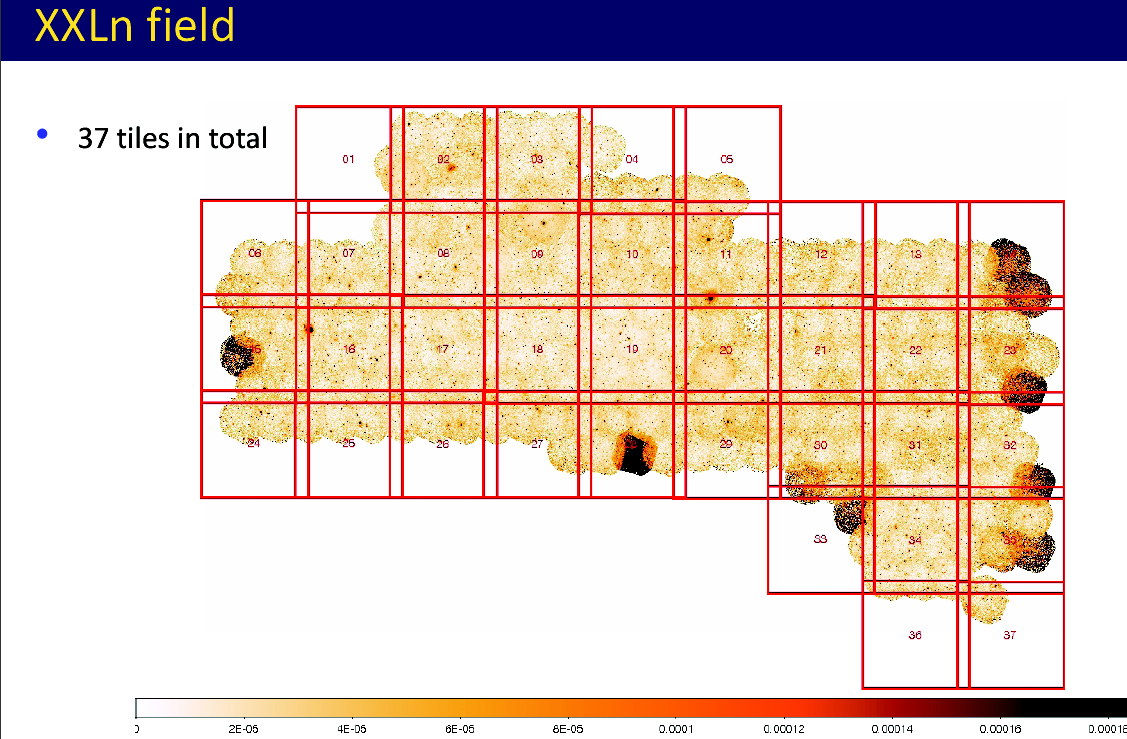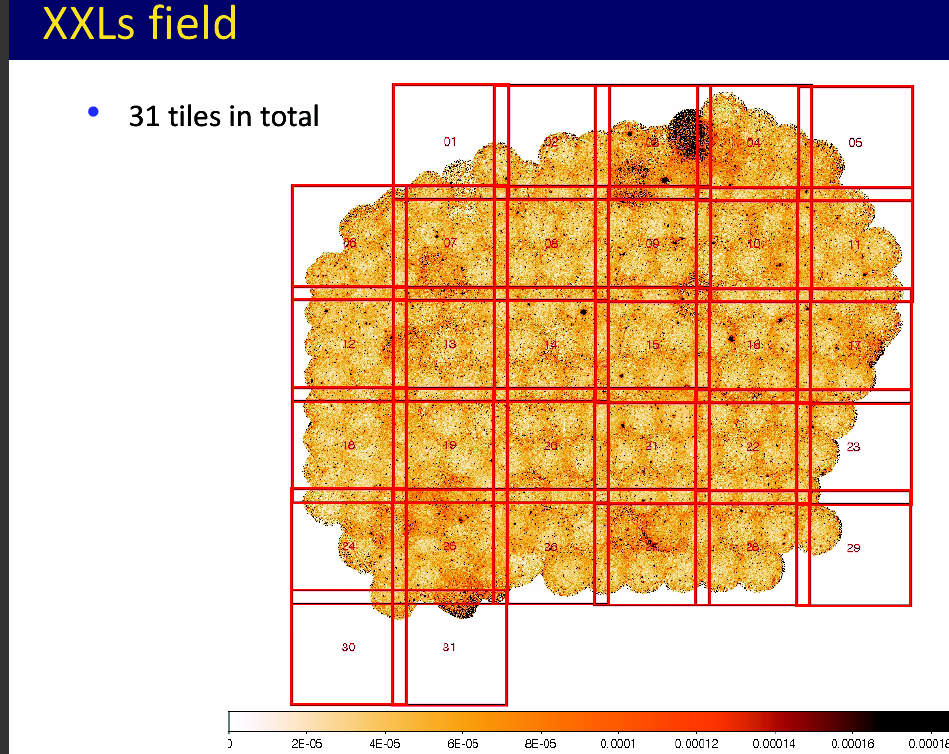The XXL survey is a project managed by a large international collaboration (see project home page) based on the observation in the X-ray band of 2 sky regions of 25 square degrees with the ESA satellite XMM-Newton with multiwavelength coverage in several other bands (radio, IR, optical and UV), since many other surveys decided to observe in or around the XXL fields.
 |  |
The main purpose of the survey is to provide a well-defined sample of some 500 galaxy clusters out to a distance when the Universe was half its current age. At the same time it will detect some 25000 point-like sources, mainly AGN. The main goal of the project is to constrain the Dark Energy equation of state using clusters of galaxies. The survey will also have lasting legacy value for cluster scaling laws and studies of AGNs and X-ray background.
XXL extends the previous Large Scale Structure (XMM-LSS survey; see home page), which in turn was built around the XMM Medium Deep Survey (XMDS), pooling the XMM Guaranteed Time observations of IASF Milano , CEA Saclay and Liege University.
In fact IASF Milano (then CNR IFCTR) has been one of the hardware institutes of the XMM EPIC instrument. The XMM-LSS and XXL surveys benefitted also of our institute’s role in several redshift surveys, in the development of software, particulary for astronomical databases. The scientific exploitation of XXL is also related with the institute activities about galaxy clusters.
IASF persons currently involved in XXL are F.Gastaldello for the galaxy clusters science and L.Chiappetti who is the administrator of the XXL Master Database hosted by our institute on behalf of the collaboration. In the past also D.Maccagni, L.Paioro and M.Polletta were involved.
The results of XXL have been published in two dedicated issues of A&A, one for the first data release (DR1), and another for the second (DR2) for a total of 35 papers, not counting the previous XMM-LSS ones. Catalogues have been published in 2007 (XLSS), 2013 (2XLSS) and 2018 (3XLSS) and are available at CDS and in our database. A final data release is planned for 2021.
